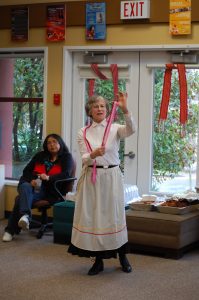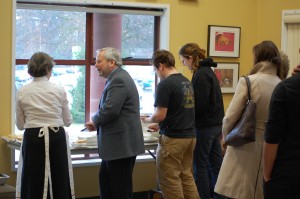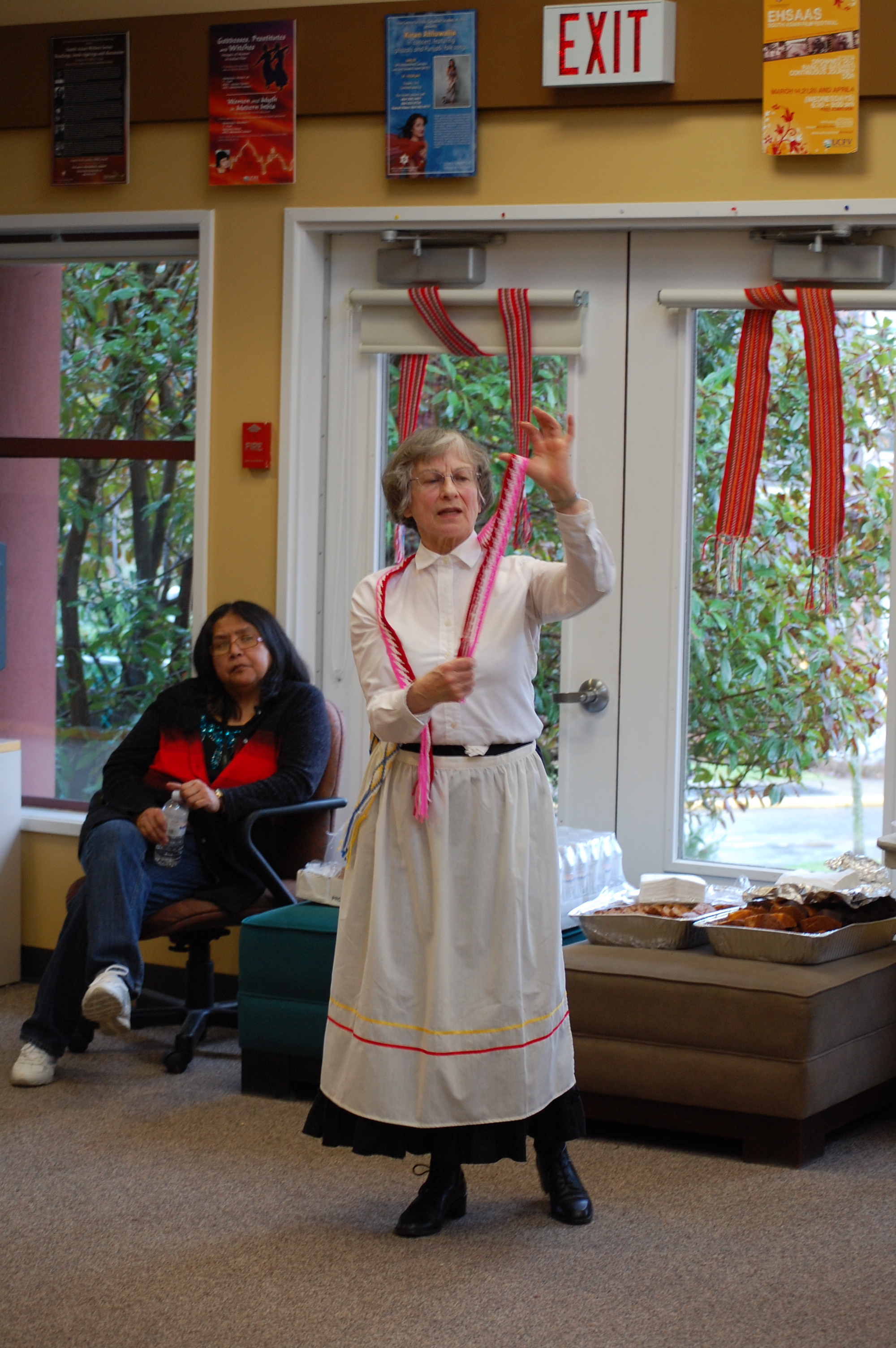Traditional and modern come together
by Paul Falardeau (Arts & Life Editor) – Email
 Thursday, January 20, UFV held an event at UHouse, in the center for Indo-Canadian studies, that celebrates one of the most important and complex people in Canadian history: the Métis.
Thursday, January 20, UFV held an event at UHouse, in the center for Indo-Canadian studies, that celebrates one of the most important and complex people in Canadian history: the Métis.
The event, which took place from 11 a.m. until 2 p.m., successfully drew patrons from all cultures and ethnicities. Through its duration, speakers and performers demonstrated their knowledge of Louis Riel, Metis heritage, traditional sashes, finger weaving, and the Métis jig. Then there was lunch, following a Métis prayer, an inclusive, optimistic, and good-hearted affair that asked no one to submit to any one creed but, rather, to give thanks in an almost secular way. The meal consisted of traditional bison stew, two kinds of bannock (pan bread which is made by most First Nations groups) and some home baked goodies. The provisions were eaten with gusto, and a quick glance around the room registered nothing but satisfaction spread across patron’s faces.
Rene Inkster, a Métis woman and storyteller, lead the event. She gave the audience a detailed background of her own personal journey to find her heritage (things got particularly emotional when she mentioned her aunt, who clearly had a profound influence on her as a child) and the struggle of the Métis at large. The Métis are a unique and important part of Canadian history, having being called by many names, including half-breeds, mixed blood, and, perhaps most indicative of their place in our countries history, early French settlers called them Les Canadiens (remember that “Canada” was misunderstood as the name of a country, although it originally meant “The Village,” so Canadiens would not mean countrymen so much as it would mean “of the village” indicating that their mothers were from the locals).
Inkster told the audience about the Métis’ important role in the fur trade, their connections across the country between European settlers and First Nations people and many other stories from the history of the Métis, one of Canada’s three recognized aboriginal groups.
 Perhaps the most widely recognized Métis, and the inspiration for the celebration, is Louis Riel. A modern folk-hero, Riel led both the Red River Rebellion and the North-West Rebellion, the latter of which he was hung for. In the process he became the founder of the province of Manitoba, a politician in the House of Commons, elected three times, and a leader in the fight for Métis rights. Despite charges of high treason laid on him by the Canadian government, Riel was viewed sympathetically in Francophone regions of Canada, and his execution had a lasting influence on relations between the province of Quebec and English-speaking Canada. He has been seen as a Father of Confederation and a traitor, and he remains one of the most complex, controversial, and ultimately tragic figures in the history of Canada.
Perhaps the most widely recognized Métis, and the inspiration for the celebration, is Louis Riel. A modern folk-hero, Riel led both the Red River Rebellion and the North-West Rebellion, the latter of which he was hung for. In the process he became the founder of the province of Manitoba, a politician in the House of Commons, elected three times, and a leader in the fight for Métis rights. Despite charges of high treason laid on him by the Canadian government, Riel was viewed sympathetically in Francophone regions of Canada, and his execution had a lasting influence on relations between the province of Quebec and English-speaking Canada. He has been seen as a Father of Confederation and a traitor, and he remains one of the most complex, controversial, and ultimately tragic figures in the history of Canada.
When the story-telling and feasting were finished, finger-weaving workshops and a demonstration of Métis Jigging (during which the audience was encouraged to join in) topped off the afternoon’s festivities, giving more reasons why the Métis are one of Canada’s – and the world’s – most interesting and important people.


